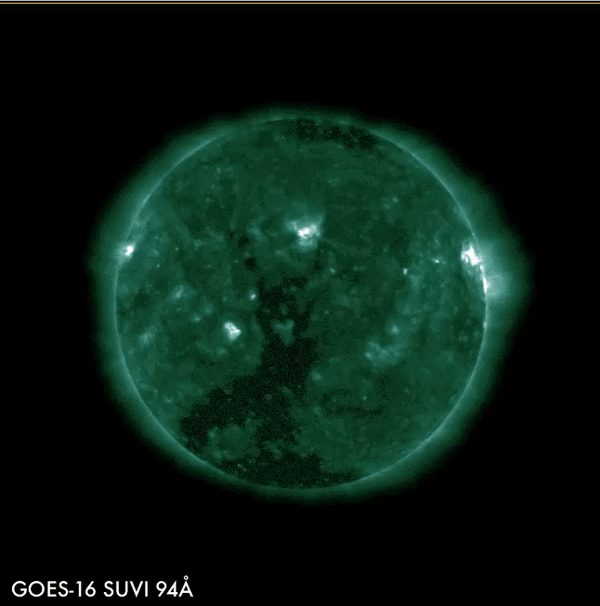SUVI sees the sun in six ways!

These images of the sun were captured at the same time on January 29, 2017 by GOES-16's Solar Ultraviolet Imager (SUVI) instrument, a telescope that monitors the sun in ultraviolet wavelengths. As it does so, SUVI can compile full disk solar images around the clock that scientists can use to enhance their forecasts of space weather.
The SUVI instrument offers six wavelength channels that allow for the observation of a range of solar phenomena. The following is a breakdown of the six channels and what they "see."
- The 94Ã… wavelength allows scientists to observe the location and morphology of solar flares*
- The 131Ã… wavelength also enables the viewing of flare locations and morphology
- The 171Ã… wavelength helps scientists detect active regions on the sun and coronal mass ejections (CMEs)*
- The 195Ã… wavelength also helps scientist detect active regions on the sun and CMEs
- The 284Ã… wavelength allows for the observation on coronal holes
- The 304Ã… wavelength helps scientists observe solar filaments (aka: dark lines threaded over the solar disk)
Data from SUVI will provide an estimation of coronal plasma temperatures and emission measurements which are important to space weather forecasting. Depending on their size and the trajectory, solar eruptions can effect the space environment close to Earth and Earth’s magnetosphere, causing geomagnetic storms that can disrupt power utilities, communication and navigation systems, and may even cause radiation damage to orbiting satellites and the International Space Station.
To learn more about SUVI and its role in monitoring solar conditions, visit GOES-R.gov.
To see a gallery of GOES-16 imagery, including more animations, visit the GOES-16 page.
Please note: GOES-16 data are currently experimental and under-going testing and hence should not be used operationally.
* Solar terminology defined:
Solar flares are sudden eruption of energy on the solar disk lasting minutes to hours, from which radiation and particles are emitted.
Coronal holes are extended regions of the solar corona and appear as dark areas in solar disk images.
Coronal mass ejections are releases of plasma and magnetic particles from the solar corona. They often follow solar flares and are normally present during a solar eruptions.
